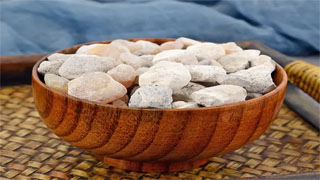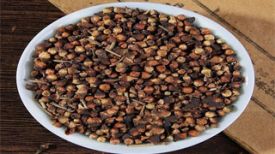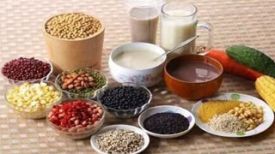Bamboo yellow, bamboo paste, Tianzhu yellow, bamboo sugar.

The stem is 8-10 meters high, with a curved tail and a straight lower part; Green, covered with white wax powder when young, with attached or sparse or dense light brown prickly hairs, later becoming hairless; Flat and hairless at the nodes; Branching often starts from the 7th to 11th nodes in the middle and lower parts of the stem, and is clustered with several or even multiple branches. The central branch is slightly thicker and longer. The sheath falls early; Leather in texture, with the apex slightly inclined towards the outer edge and forming an asymmetric wide arch shape. The sheath ear is smaller, and the large ear is narrow, elongated, circular to lanceolate; Teeth on the edge of the sheath tongue; Culm segments erect, ovate narrowly triangular; Leaf sheaths hairless, with ridges on the back; The leaf ears are usually sickle shaped; The leaf tongue is extremely low and short, with erosive edges and no hair; The leaf blade is linear lanceolate to narrowly lanceolate, with no hair on the top and dense short pubescence below. The apex is gradually pointed with a subulate fine tip, and the base is nearly circular or wedge-shaped. False spikelets are solitary or clustered at each node of the flower branch. They are dark purple when fresh and bronze when dry, and are linear and lanceolate; The first leaves are broadly ovate, with 2 ridges; 2 or 3 bracts with buds, broadly ovate; The spikelet contains 5-8 small flowers; The internodes of the spikelet axis are semi-cylindrical or flat, with an enlarged tip; Ying 1 piece, broadly ovate, with 21 veins; Lemma elliptical, with 25 veins; The lemma is lanceolate, with 2 ridges and 20 veins between the ridges; Unequal scales, with long ciliated edges; The filaments are slender and the anthers are yellow; Ovary wide ovoid, style covered with short hard hairs, stigma 3. No mature caryopsis seen.
3. Origin distribution
Often cultivated near rivers and villages in low altitude areas. Distributed in Guangdong and Guangxi, it is now introduced and cultivated in various parts of southwestern, central, and eastern China.
4. Harvesting and processing
Harvest in autumn and winter, cut off the stems, cut bamboo yellow, and sun dry.
5. Characteristics of medicinal herbs
Irregular pieces or particles of varying sizes. The surface is gray blue, gray yellow or gray white, some are clean white, semi transparent, and slightly glossy. Lightweight, hard and brittle, easily broken, and highly hygroscopic. Odorless, with a light taste.
6. Nature, taste, and meridian tropism
Cold in nature, sweet in taste. Guixin Meridian and Liver Meridian.
7. Effect and function
Clear heat and eliminate phlegm, cool the heart and calm the shock. A clearing heat phlegm medicine belonging to the sub category of phlegm resolving, cough relieving, and asthma relieving drugs.
8. Clinical applications
Dosage 3-9 grams, decoct and take. Use to treat fever, dizziness, stroke, phlegm confusion, pediatric phlegm heat convulsions, convulsions, and night crying.
9. Pharmacological research
It has analgesic and local anesthetic effects, which can weaken the contractile force and slow down the heart rate of isolated frog hearts. Additionally, it can cause photosensitive dermatitis.
10. Chemical composition
Containing polysaccharides, amino acids, bamboo red fungus A, bamboo red fungus B, bamboo red fungus C, mannitol, stearic acid, bamboo yellow pigment A, bamboo yellow pigment B, and bamboo yellow pigment C. Also containing 14 inorganic elements such as sodium, magnesium, aluminum, and silicon; 14 types of amino acids and alkaloids.
11. Taboos for use
Those without solid heat, phlegm, and fire should take it with caution, and those with spleen deficiency, stomach cold, and loose stools should not take it.
12. Compatibility prescription
① Treating immediate asthma: 3g of dried tangerine peel, 4.5g of Pinellia ternata (prepared) and Zhuhuang each, 2.1g of ephedra (first decocted to remove foam), 1.8g of perilla seeds, 1.2g of agarwood (ground powder medicine), 1.5g of Asarum, 1.8g of roasted licorice, and decocted with two slices of ginger. (Ma Huang Su Zi Tang from "I Don't Know Medical Necessity")
② Treating infantile chancre: 6 grams of realgar (ground, water fly) and 6 grams of geranium each, 3 grams of morning glory powder, the same as above, further ground. The batter is made into a pill, which is the size of corn. Take two to five pills per serving, and after eating, add mint soup. Add more pills to the larger one. (Niuhuang Pills in the Direct Formula of Pediatric Medicine)
③ Not only does it treat nosebleeds: 0.3g each of Tianzhu Huang and Chuanxiong, 15g each of Fangji, with three ingredients added and ground into powder. Take 3 grams per serving and adjust with fresh water. Pulmonary damage and vomiting blood, taking 6 grams of medication, 3 grams of fresh noodles, and adjusting with water. Take after eating. (Tianzhu Huangsan in the "Shengji Zonglu")
④ Mixed mouth sores: Divide into equal parts of geranium and moonstone, with a small amount of borneol. As the last addition. (Jingyue Quanshu)


